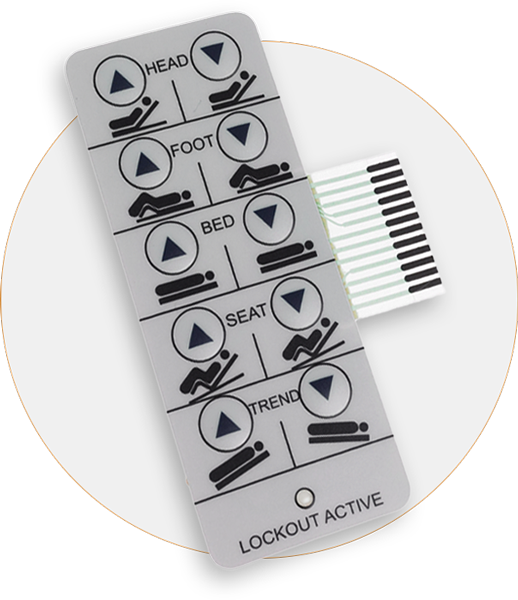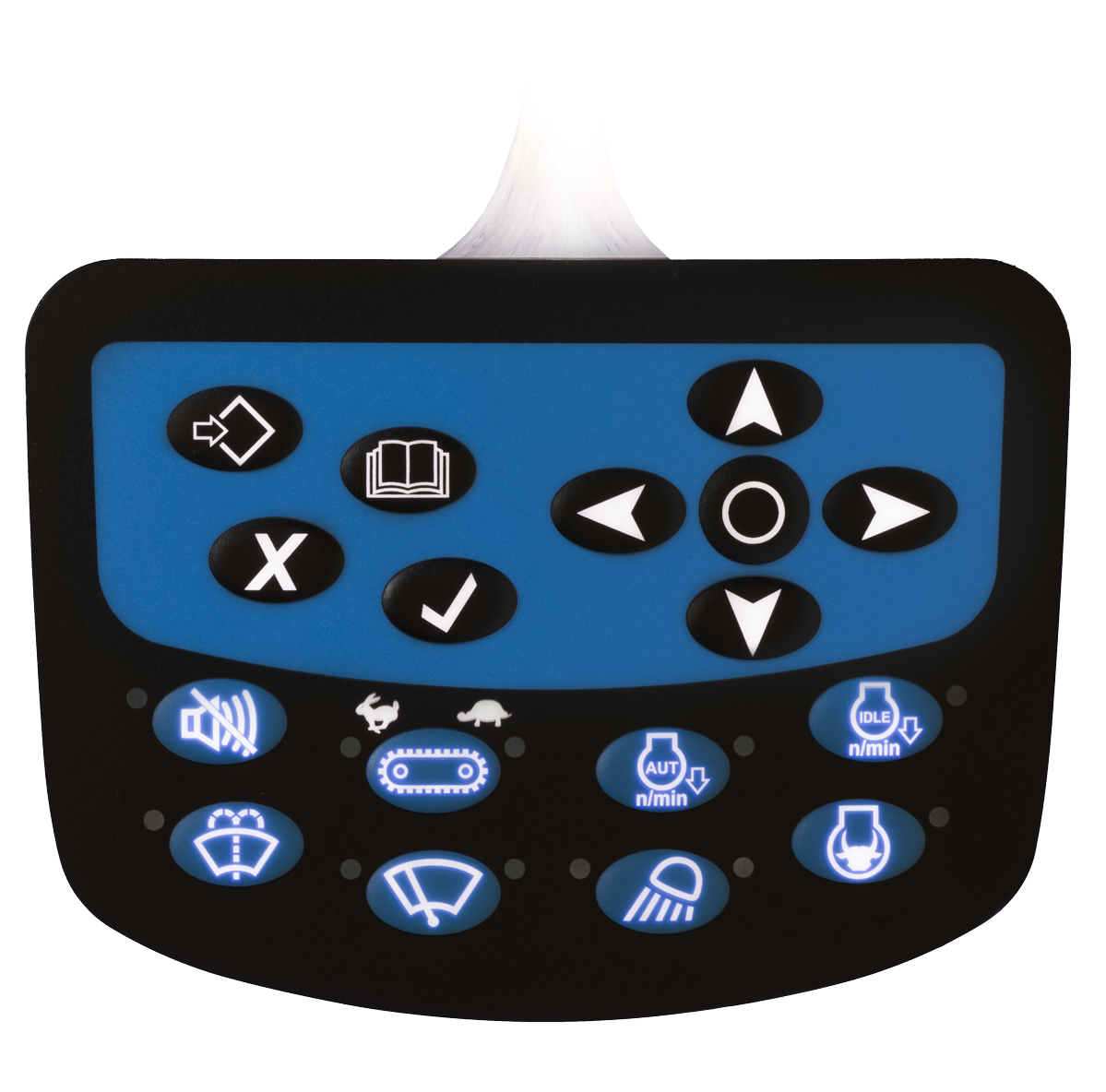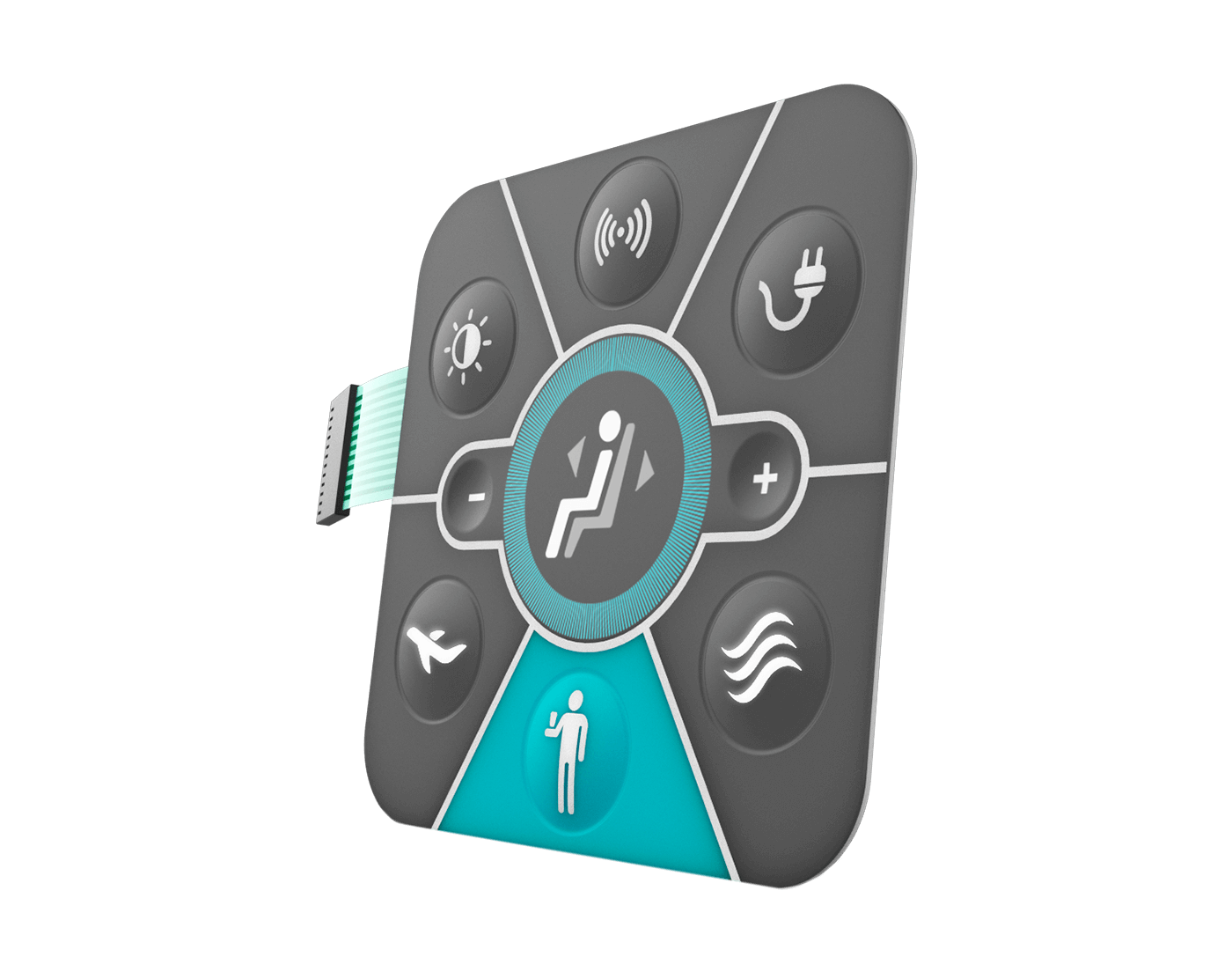Ensuring Quality and Longevity with Membrane Switches in Electronics
Comprehending the Significance of Membrane Switches in User User Interfaces
Membrane buttons are indispensable parts in the layout of reliable interface, promoting not just functionality but likewise enhancing aesthetic allure and customer interaction. Their one-of-a-kind features, such as resistance to personalized layouts and environmental variables, make them appropriate for a varied array of applications across numerous industries. As we explore the future patterns and different advantages related to Membrane technology, it comes to be clear that these switches are greater than just components; they stand for a merging of development and practicality. The ramifications of this technology on user experience deserve examining additionally.
What Are Membrane Switches?

The spacer layer, which has sticky residential properties, enables the separation of the circuit layer from the overlay, ensuring that the switch continues to be in a non-activated state until pressed. When pressure is applied to the overlay, it presses the spacer layer, linking the gap and completing the circuit in the underlying layer. This layout not only minimizes the physical space required for traditional mechanical switches yet also enhances the resilience of the tool, as Membrane buttons are usually resistant to dirt, wetness, and various other ecological elements.
Frequently discovered in applications ranging from consumer electronic devices to clinical devices, Membrane buttons are integral to modern-day innovation, providing a reliable and user-friendly interface that lines up with modern design requirements.
Advantages of Membrane Switches
While many button innovations exist, Membrane Switches deal distinct advantages that make them particularly preferable in numerous applications. Among the primary benefits of Membrane switches is their portable layout, which allows for space-saving applications in gadgets where realty is limited. Their thin account not just enhances aesthetic appeal but also facilitates lightweight construction.
Another considerable benefit is their resistance to environmental variables. Membrane switches are generally secured versus wetness, dirt, and impurities, making them ideal for usage sought after atmospheres, such as clinical gadgets and commercial tools. This resilience expands the life expectancy of the button, minimizing maintenance expenses and boosting reliability.
In addition, Membrane switches can be personalized to fulfill specific design needs, integrating special graphics and colors that improve individual communication. Their responsive feedback options can additionally be customized to give a satisfying user experience. Furthermore, Membrane switches are economical, especially in high-volume applications, as they can be created successfully.
Applications in Various Industries

In the customer electronics industry, Membrane switches are common in gadgets such as microwaves, washing devices, and remote controls. Their tactile feedback and visual choices boost customer experience while providing a streamlined, modern-day appearance. Additionally, automobile producers make use of Membrane buttons in dashboard controls and infomercial systems, where room is restricted, and individual interaction is essential.
In addition, the industrial market leverages Membrane switches in control panels for machinery and equipment, enabling for intuitive operation in usually extreme settings. Their resistance to chemicals and dampness makes sure long life and reliability in these applications. On the whole, the versatility of Membrane Switches adds substantially to their extensive usage, making them essential in various technical domain names.
Layout Factors To Consider for Membrane Buttons

When making Membrane switches, several find this crucial factors to consider must be taken right into account to ensure ideal performance and user experience. Firstly, the option of materials is vital; choosing durable, high-grade substrates can improve the button's durability and resistance to ecological aspects such as dampness and temperature changes.
Second of all, the style of the graphic overlay need to focus on clarity and ease of use. Icons and text should be readable, and the design must assist in instinctive communication (membrane switches). Furthermore, responsive responses is essential; including a responsive dome or other mechanisms can improve the user experience by offering physical verification of activation
Another vital variable is the switch's electrical performance. Developers need to guarantee that the conductive traces are properly developed to lessen resistance and avoid signal interference. This includes assessing the needed actuation force and making certain compatibility with the electronic parts they will certainly interface with.

Future Fads in Membrane Modern Technology
As innovation proceeds to advance, Membrane buttons are poised to develop dramatically, driven by technologies in products and manufacturing strategies. One emerging pattern is the unification of advanced products, such as conductive inks and flexible substratums, which boost sturdiness and decrease the general weight of Membrane switches. These products not just enhance the responsive reaction but also allow for the layout of buttons that can endure harsher ecological problems.
Moreover, the combination of touch-sensitive technologies is changing conventional Membrane Switches into more interactive interface. Capacitive touch sensors embedded within Membrane button panels can give an extra responsive and intuitive individual experience, lining up with the growing need for sleek, modern designs in customer electronic devices.
In addition, innovations in printing techniques, such as electronic and 3D printing, allow fast prototyping and modification of Membrane buttons. This adaptability permits producers to respond extra swiftly to market demands and consumer choices.
Lastly, sustainability is ending up being a significant focus, with manufacturers exploring environmentally friendly materials and processes. his explanation As these fads unfold, the future of Membrane modern technology assures enhanced performance, visual charm, and environmental obligation, solidifying their function in innovative customer interfaces throughout numerous markets.
Final Thought
In conclusion, Membrane Switches stand for an essential component in the layout of user interfaces, integrating performance with visual adaptability. As developments in technology proceed, the advancement of Membrane switches is anticipated to further improve user interfaces, driving development and enhancing usability in a progressively complicated technological landscape.
Membrane switches are indispensable components in the layout of effective individual interfaces, promoting not only performance however additionally enhancing visual charm and customer interaction.Membrane Switches offer as an important part in numerous user interfaces, facilitating a seamless communication between users and digital devices.While many button technologies exist, Membrane Switches offer unique advantages that make them especially desirable in numerous applications.Additionally, Membrane switches can be customized to fulfill specific layout demands, including distinct graphics my blog and shades that boost user communication.In conclusion, Membrane Switches represent an important element in the layout of user interfaces, integrating capability with aesthetic versatility.